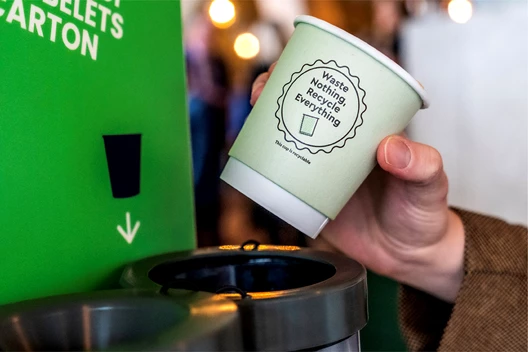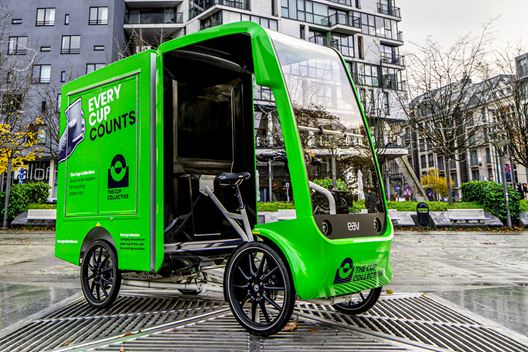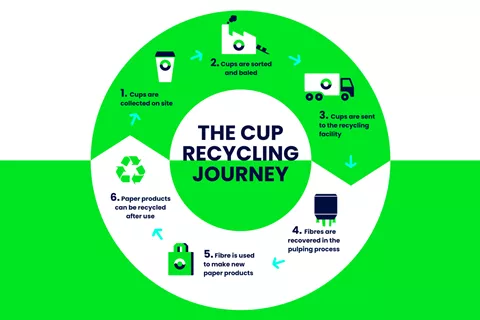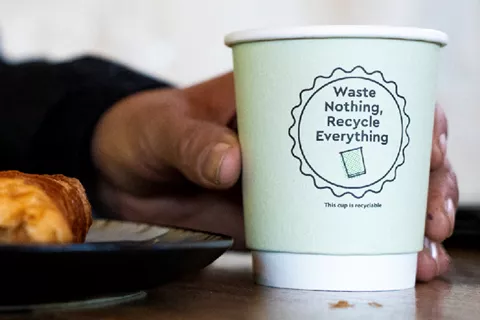What is The Cup Collective?
Every cup matters
The Cup Collective is an innovative new program, which aims to recycle and capture the value of used paper cups on an industrial scale. Earlier this autumn, we joined forces with Stora Enso to launch a new paper cup recycling initiative. We are now delighted to see The Cup Collective in action together with new partners including McDonald's, NMBS-SNCB, SSP Group plc, Seda International Packaging Group, C2 Centre to accelerate recycling in their locations in Brussels.

Recycling for the future
Journey to 2030
The European Union has set a recycling target for paper and board packaging of 85% by 2030. Paper cups are recyclable but need to be collected before they can be turned into new paper products. The Cup Collective initiative will create the necessary collection infrastructure to significantly increase the recycling rate of wood fiber in paper cups. Above all, the program will make it easier for consumers and businesses to collect used paper cups to be regenerated into valuable recycled raw material.


1. Cups are collected on site
Cups can be collected on site in a source-segregated manner. If a quick service restaurant, purpose-built bins can be placed on your premises to segregate the cups from other waste.
2. Cups are sorted and baled
Once collected, all of the cups are returned to a central depot for sorting, aggregation and baling. The sorting ensures that the used cups meet the quality standards required by the mill(s) for recycling and acts as a quality control. Substandard material can easily be traced using the traceable sack technology.
3. Cups are sent to the recycling facility
Upon arrival at the mill, the bales of used cups will undergo further quality inspection, and once approved, will be used within the mill’s recycling process.
4. Fibers are recovered in the pulping process
Paper mills use pulpers to break down the recovered paper and cups to extract the valuable fiber contained within them. Paper cup fibers are long in length and in demand for high quality recycling applications such as magazine papers. Due to the blades within the pulpers, the fibers will be cut shorter each time they are recycled, but even then they can be used in items such as toilet or tissue paper before they become contaminated and discarded
5. Fiber is used to make new paper products
Recovered paper can be recycled into all manner of new paper products, they too can then be collected and recycled.
6. Paper products can be recycled again and again after use
According to a study conducted by Graz University of Technology in Austria, fiber-based packaging material can be recycled at least 25 times without losing its mechanical or structural integrity.

